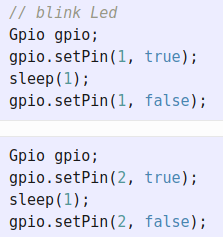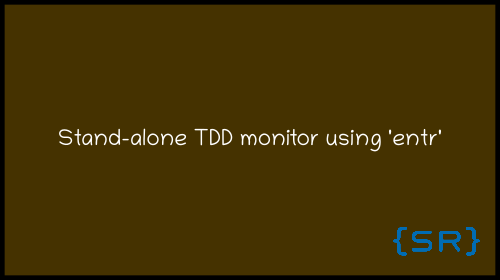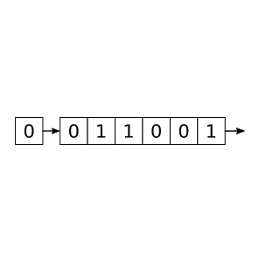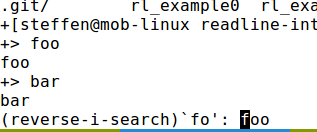After talking about decoupling units at the linker level in part 2, this last part of the series is going to be about achieving the same goal, but at the preprocessing stage of the build process. At the end of the article, you will find a comparison of all three...
[Read More]
Embedded Programming: Loose Coupling Best Practices (Part 2/3)
After talking about decoupling at the object level in part 1 of this series, we are going to explore another method in this article. This will be based on yet another stage of the software build process – the linking.
[Read More]
Embedded Programming: Loose Coupling Best Practices (Part 1/3)
When creating Embedded Software, system complexity that grows over lifetime makes it increasingly harder to reason about certain behaviors of the program. As always in engineering, it helps to divide one big problem into several smaller problems in order to be able to eventually solve it. This is what this...
[Read More]
Git: Compare feature branches to master (Part 2/2)
In the previous article we’ve seen how to ask Git for changes introduced by a particular branch. This time, instead of changes, we would like to know which commits were introduced by a branch – that is, the hashes assigned to them.
[Read More]
Git: Compare feature branches to master (Part 1/2)
This article shows how to display changes in Git feature branches that are not yet merged into master.
We are going to find a simple answer for that simple question, starting off with basic git diff commands.
[Read More]
Debugging on the Command Line
Do you use a GUI debugger? Chances are that it is backed by the GNU Debugger, gdb, somehow. Wouldn’t it be great to use that backend directly? In this article, we are going to highlight some strengths of gdb’s command-line interface over GUI frontends.
[Read More]
Worse Than Duplication
Here are some thoughts on refactoring, especially on how to deal with duplicate code.
[Read More]
Stand-alone TDD monitor using 'entr'
Have you ever thought of something that continuously monitors your project’s source tree and triggers a unit test build upon file changes? You want it to be independent of the editor or IDE you use? Then maybe this is for you.
[Read More]
Fixing Typos while Writing -- Two Ideas
Here are some thoughts on text editing. No matter what kind of text you write – source code, articles, to-do lists, books – there’s always a chance you get a single letter wrong at one point. Depending on your touch typing skills, this might not happen very often. But when...
[Read More]
C Bitshift Operator Revisited
Recently someone asked me about C’s bitwise shift operator, specifically about what it does to signed integers. To be honest, until then I haven’t even considered applying the left or right shift operator to anything else than unsigned numbers. So let’s figure out what this is about.
[Read More]
Undo Feature Using Git Plumbing Commands
Have you ever thought about adding an undo feature to your application? This blog article is an attempt to approach that task by utilizing some internals of the Git version control system together with the Memento design pattern. But please, don’t take this too seriously :-).
[Read More]
Hex Parser
This article is about creating a parser for HEX files, a format that is often used as an intermediate step for programming microcontrollers. Although there are – of course – implementations out there already, I would like to use this as a welcome opportunity to play around with some interesting...
[Read More]
From Subversion to Git: Snapshots
What does it mean that we talk about snapshots of our Git repository, while in Subversion we think in terms of file changes? For me at least, the key to understanding Git is that every commit is, in fact, a snapshot of the entire project. Not a list of patches....
[Read More]
Bash Job Control
When working on the command line, you may sometimes find yourself in a situation where you’d like to start a new program while another long-running process (e.g. an editor) is blocking the current terminal. In the course of this article we are going to find out how to achieve quick...
[Read More]
Introduction To Readline
When developing command line applications, you will most certainly want to have bash-like line-editing features. For that, an excellent choice is the GNU readline library. We will see in this article how to use its features from out own programs in order to provide a user experience similar to that...
[Read More]
Non-Interactive Text Editing in Vim
The Vim text editor has its roots in the traditional line-based editors of the early days. Due to that heritage, it supports a set of impressively powerful Ex commands that act on individual lines. In this article, we will see how to create a script composed of these commands and...
[Read More]
Vim Errorformat Challenge
The Vim text editor provides built-in support for parsing compiler output. It has quite a broad understanding of the concept of a compiler though: You can call just any command and let the editor parse its output. For this to work correctly, format strings need to be specified, matching the...
[Read More]
Discovering Refactoring Needs
This article is about creating a plot of complexity over change rate for a given set of source code files. According to an idea I’ve seen on twitter last week, this might help us finding spots in the code that have an influence on how well a project goes. Here...
[Read More]
Maintaining A Clean History In Centralized Git Workflows
Git is a powerful tool for versioning (not only) source code files. It is decentralized by design but also works perfectly for setups that rely on a central server. By using a standard pull/push workflow though, the central history can grow complex pretty fast. In this article we will look...
[Read More]
Linux Shebang Insights
In Linux, you can execute an interpreted script file in exactly the same way as you would execute a compiled binary: by setting the ‘executable’ attribute and just run it. A special sequence of characters at the beginning of the script makes this possible. In this article we will explore...
[Read More]








